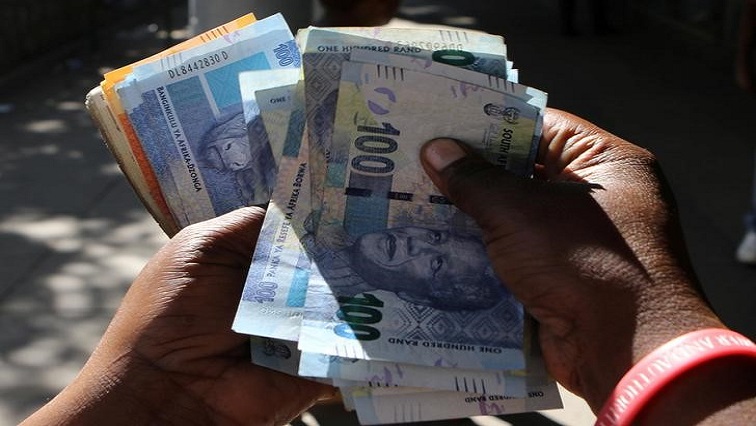Government’s debt currently stands at R4.7 trillion and debt servicing costs stand at R355 billion rand a year. However, what does it mean to have debt of nearly R5 trillion? What does it mean for the average South African?
R4.7 trillion is 4.7 with eleven zeros at the end. How many can fathom what this number looks like, let alone how much money it would be if printed out? That is the amount government owes to its debtors. It is money the state borrowed to take care of its priorities.
Economist with the Efficient Group, Dawie Roodt, breaks down what this figure means.
“If we work for a year for free, we will have to work until September all of us, just to pay back the debt incurred on our behalf,” he says.
Many of the members of parliament have raised the alarm about the staggering debt figures.
The Democratic Alliance’s Finance Spokesperson Dion George and Steve Swart from the African Christian Democratic Party (ACDP), explain what it could buy.
“The population is about 60 million. If you gave R78 000 to every single person in SA, that is approximately R4.7 trillion. So, R4.7 trillion is enough to give every single person in SA R78 000. If one considers it will take you 32 years to spend R1 billion at R1 a second, that is half a lifetime. A trillion rand is a thousand billion rand. This means it will take 32 000 years to spend a trillion at one rand per second,” says George.
“What could be done to improve service delivery of R355 billion debt service costs per year? If you assume a school costs R500 million rand, you could build 710 new schools. If you assume a hospital costs R1 billion, you could build 355 new hospitals. It gives you an idea of the huge amounts involved in public finances,” says Swart.
Freedom Front Plus MP, Wouter Wessels, and Inkatha Freedom Party MP, Elphas Buthelezi, explain what the debt means for the average South African…
“Yet gov is taking on more debt, from failed SOE’s and this money could’ve gone to more schools, hospital. Even if you just take the debt servicing costs, it could have made a huge difference. Less money for basic services and infrastructure development. It means if (you are) sick and you go to hospital there is no meds, it means when you need the police they come seven hours later because no vehicles. It means students must work at night because NSFAS is not giving them enough money. Schools will continue to have challenges with staffing because government doesn’t have money to pay for salaries and necessary infrastructure.”
Mid-Term Budget Policy Statement fell short of expectations: Opposition parties
Opposition parties in Parliament say the Mid-Term Budget Policy Statement fell short of their expectations. Finance Minister Enoch Godongwana delivered his speech in the National Assembly which convened at the Cape Town City Hall on Wednesday.
Among others, he announced that government will step in to fix Eskom’s debt and that the R350 COVID-19 Social Relief of Distress grant would be extended to the end of March 2024.
GOOD’s MP Brett Herron says the government will have to make the Social Relief Grant a permanent fixture of the annual budget. Herron says it is unrealistic for the government to think that it can ever withdraw the grant.
“Realistically government must accept no way that grant can ever be withdrawn, to take away the relief from their poverty of over nine million individuals. The government must use this as the basis of the Basic Income Grant which is a section 27 right in our country.”
The country’s ever-increasing debt is a huge source of concern to some parties.
Freedom Front Plus MP Wouter Wessels and Economic Freedom Fighters (EFF) Chief Whip Floyd Shivambu says at R4.7 trillion, it is fast getting out of control.
Shivambu says the biggest crisis the country faces currently, is debt servicing.
“Paying debt R355 billion in a context where the economy is not growing, where you have not resolved energy and electricity crisis in particular. How to grow the economy if we don’t have a clear dependable plan for how to resolve the electricity crisis? So, you can grow economy and then be able to expand revenue base and not drowning in paying off debt services.”
Wessels says this is a huge concern.
“Government debt is out of control. Talking about R4.7 trillion in government debt, the service cost is out of control. The fiscus can’t afford it. A lot of debt of failed entities is absorbed by the state and that is unsustainable the fiscus position that we are now in.”
George says Godongwana is not taking the country forward.
“The government said it would reduce debt but a massive increase to take over Eskom debt will push it up. We are going the wrong way. (I) don’t support taking Eskom’s debt on the national balance sheet for people to pay for. There can be another model.”
MTBPS 2022 | Political parties react to Godongwana’s budget speech


